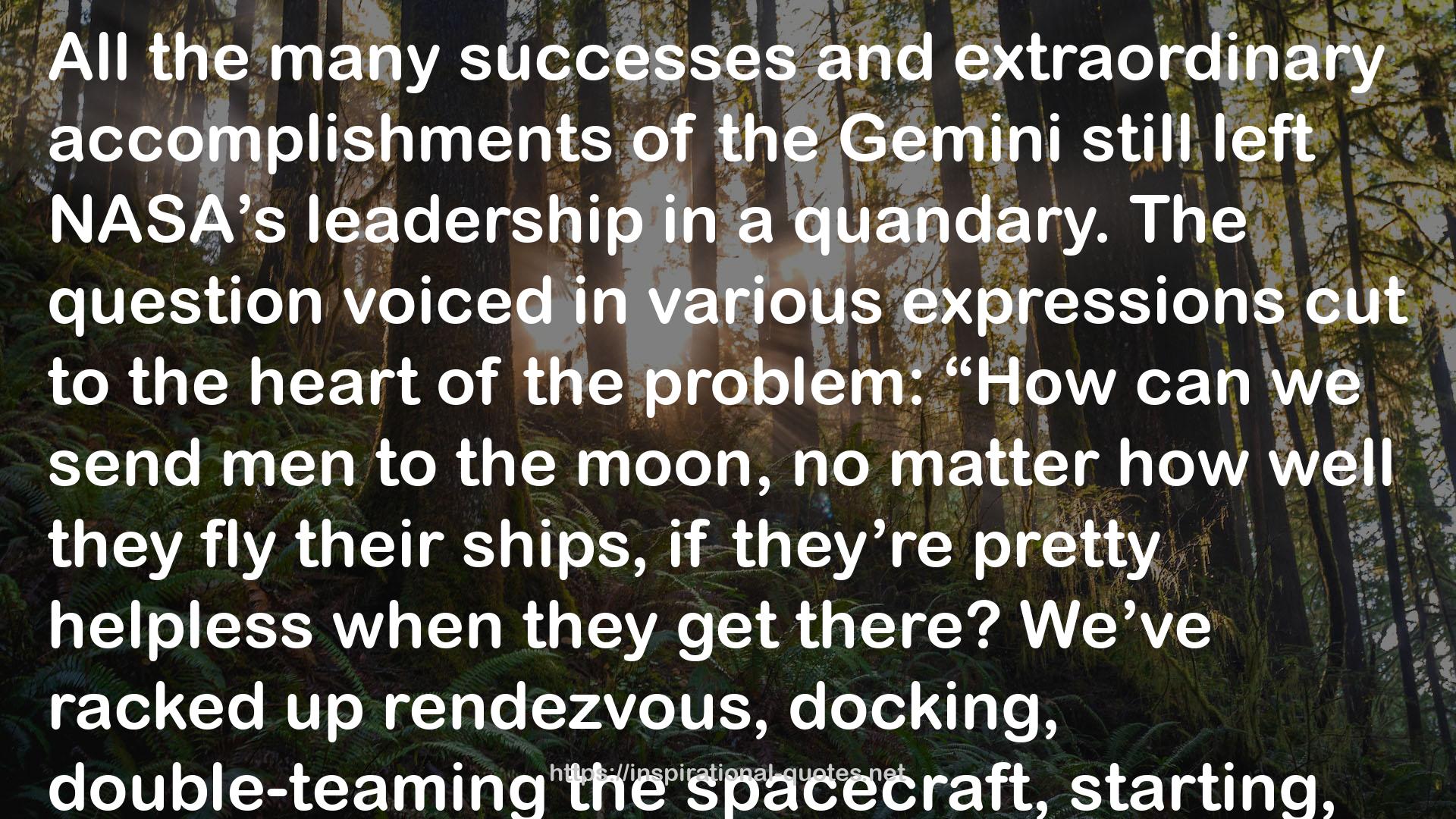" All the many successes and extraordinary accomplishments of the Gemini still left NASA’s leadership in a quandary. The question voiced in various expressions cut to the heart of the problem: “How can we send men to the moon, no matter how well they fly their ships, if they’re pretty helpless when they get there? We’ve racked up rendezvous, docking, double-teaming the spacecraft, starting, stopping, and restarting engines; we’ve done all that. But these guys simply cannot work outside their ships without exhausting themselves and risking both their lives and their mission. We’ve got to come up with a solution, and quick!” One manned Gemini mission remained on the flight schedule. Veteran Jim Lovell would command the Gemini 12, and his space-walking pilot would be Buzz Aldrin, who built on the experience of the others to address all problems with incredible depth and finesse. He took along with him on his mission special devices like a wrist tether and a tether constructed in the same fashion as one that window washers use to keep from falling off ledges. The ruby slippers of Dorothy of Oz couldn’t compare with the “golden slippers” Aldrin wore in space—foot restraints, resembling wooden Dutch shoes, that he could bolt to a work station in the Gemini equipment bay. One of his neatest tricks was to bring along portable handholds he could slap onto either the Gemini or the Agena to keep his body under control. A variety of space tools went into his pressure suit to go along with him once he exited the cabin. On November 11, 1966, the Gemini 12, the last of its breed, left earth and captured its Agena quarry. Then Buzz Aldrin, once and for all, banished the gremlins of spacewalking. He proved so much a master at it that he seemed more to be taking a leisurely stroll through space than attacking the problems that had frustrated, endangered, and maddened three previous astronauts and brought grave doubts to NASA leadership about the possible success of the manned lunar program. Aldrin moved down the nose of the Gemini to the Agena like a weightless swimmer, working his way almost effortlessly along a six-foot rail he had locked into place once he was outside. Next came looping the end of a hundred-foot line from the Agena to the Gemini for a later experiment, the job that had left Dick Gordon in a sweatbox of exhaustion. Aldrin didn’t show even a hint of heavy breathing, perspiration, or an increased heartbeat. When he spoke, his voice was crisp, sharp, clear. What he did seemed incredibly easy, but it was the direct result of his incisive study of the problems and the equipment he’d brought from earth. He also made sure to move in carefully timed periods, resting between major tasks, and keeping his physical exertion to a minimum. When he reached the workstation in the rear of the Gemini, he mounted his feet and secured his body to the ship with the waist tether. He hooked different equipment to the ship, dismounted other equipment, shifted them about, and reattached them. He used a unique “space wrench” to loosen and tighten bolts with effortless skill. He snipped wires, reconnected wires, and connected a series of tubes. Mission Control hung on every word exchanged between the two astronauts high above earth. “Buzz, how do those slippers work?” Aldrin’s enthusiastic voice came back like music. “They’re great. Great! I don’t have any trouble positioning my body at all.” And so it went, a monumental achievement right at the end of the Gemini program. Project planners had reached all the way to the last inch with one crucial problem still unsolved, and the man named Aldrin had whipped it in spectacular fashion on the final flight. Project Gemini was "
― Alan Shepard , Moon Shot: The Inside Story of America's Race to the Moon
